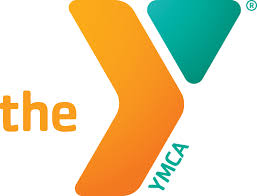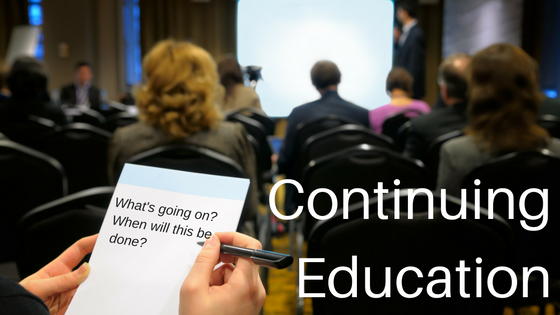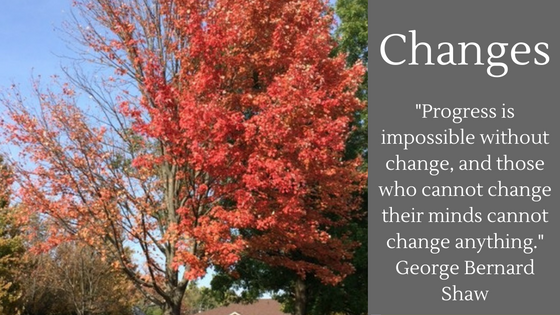Although we should practice gratitude every day of the year, we think about it most on Thanksgiving. Yesterday I read a post on one of my favorite blogs, Spin Sucks. Gini Dietrich wrote about The Grateful Challenge and posted her top 10 reasons to be grateful. I liked the post so much, I decided to copy it! This may have little to do with training or education, but what the heck, it’s Thanksgiving!
 The first word I wrote in my list for The Grateful Challenge was family. I have been blessed with parents, siblings, cousins, aunts, and uncles. I have my own family consisting of my husband, my daughter, and Calvin, the wiener dog. I’m thankful that we can all be together for this holiday, and hopefully many more. I’m thankful for the great times we’ve spent together at ballet performances, soccer games, and around the table sharing a meal. Calvin doesn’t get to come along to the performances or soccer games, but he does enjoy the occasional snack that falls from the table or sitting on someone’s lap after the
The first word I wrote in my list for The Grateful Challenge was family. I have been blessed with parents, siblings, cousins, aunts, and uncles. I have my own family consisting of my husband, my daughter, and Calvin, the wiener dog. I’m thankful that we can all be together for this holiday, and hopefully many more. I’m thankful for the great times we’ve spent together at ballet performances, soccer games, and around the table sharing a meal. Calvin doesn’t get to come along to the performances or soccer games, but he does enjoy the occasional snack that falls from the table or sitting on someone’s lap after the meal!
meal!
I never thought I would be a sports fan, but then I started watching soccer (the real football), and I was hooked. Some of the best times I’ve had over the past few years have been at Mapfre Stadium watching the Columbus Crew. Because we’re season ticket members, we get to go to all kinds of special events and meet the players. I finally got the courage to ask players to pose with me for pictures. This is one of my favorite players, Tony Tchani, smiling with me at last season’s fan fest. The Crew didn’t do so well in 2016, but we still love ’em!
 What would life be without art? I can’t imagine a world in which we didn’t have the ability to express ourselves and reflect the beauty around us through art. I’ve long wanted to take a glass blowing class, but never found the time or the money to do it (it seemed frivolous, etc.). Then my daughter gave me the present of a glass blowing class at a local studio, Glass Axis. We both took the class and created ornaments to hang on our Christmas tree. It was hot. I loved it! (The ornament didn’t turn out too badly, either.) One of my goals for 2017 is to go back and create something else out of glass. I think I’m hooked.
What would life be without art? I can’t imagine a world in which we didn’t have the ability to express ourselves and reflect the beauty around us through art. I’ve long wanted to take a glass blowing class, but never found the time or the money to do it (it seemed frivolous, etc.). Then my daughter gave me the present of a glass blowing class at a local studio, Glass Axis. We both took the class and created ornaments to hang on our Christmas tree. It was hot. I loved it! (The ornament didn’t turn out too badly, either.) One of my goals for 2017 is to go back and create something else out of glass. I think I’m hooked.
 A major challenge for me in the past two years has been to get healthy. This included losing weight and becoming more active (they do go hand in hand). We have been members at our local YMCA for many years, but I got out of the habit of working out regularly. This year I decided to try something new. I went to my first cycling class in January and got hooked. I’m thankful for the opportunity to get out of bed early 2-3 times a week and sweat with a group of people who are having just as much fun as I am. I joined them this morning for our pre-Thanksgiving feast work-out. It was
A major challenge for me in the past two years has been to get healthy. This included losing weight and becoming more active (they do go hand in hand). We have been members at our local YMCA for many years, but I got out of the habit of working out regularly. This year I decided to try something new. I went to my first cycling class in January and got hooked. I’m thankful for the opportunity to get out of bed early 2-3 times a week and sweat with a group of people who are having just as much fun as I am. I joined them this morning for our pre-Thanksgiving feast work-out. It was  tough, but worth every minute!
tough, but worth every minute!
There’s something about sunflowers that always makes me smile. I like flowers in general, but sunflowers are favorites. The come in different colors and sizes. I planted some last year, and the seeds that the birds and squirrels didn’t eat grew into lovely, tall plants with many, many blossoms. I missed the chance to plant sunflowers this year, but I plan on making up for it next spring. Who doesn’t like flowers that make you smile?
 I am most grateful for my faith community at Gethsemane Lutheran Church. I have always attended or belonged to a church, but my faith is challenged and enriched by the people at Gethsemane in very special ways. We join together to live out our faith in the community through service. The quilts in this picture are one example of that. This year 101 quilts were made by Gethsemane members and shipped to Lutheran World Relief, then on to people all over the world who will use the quilts for warmth, shelter, and clothing. It’s a reminder to me that we have so much when others have very little.
I am most grateful for my faith community at Gethsemane Lutheran Church. I have always attended or belonged to a church, but my faith is challenged and enriched by the people at Gethsemane in very special ways. We join together to live out our faith in the community through service. The quilts in this picture are one example of that. This year 101 quilts were made by Gethsemane members and shipped to Lutheran World Relief, then on to people all over the world who will use the quilts for warmth, shelter, and clothing. It’s a reminder to me that we have so much when others have very little.
Whatever you are thankful for today and throughout the year, I hope you have the opportunity to take a few minutes this holiday season to think about the people and things that make your life wonderful.




